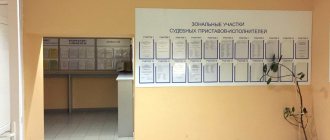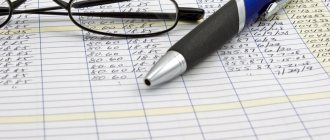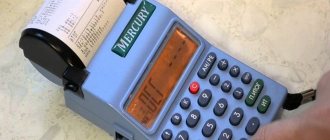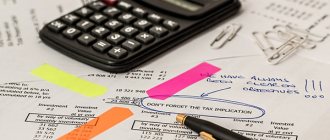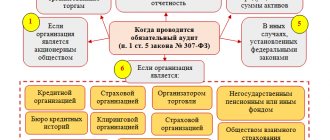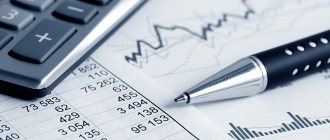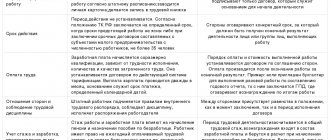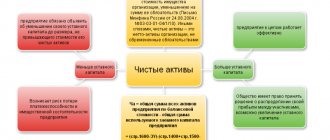Surplus goods in a retail store Nobody creates surplus goods on purpose, so where do they come from? We want to please our customers with a wide range and new products. Often, sales representatives of suppliers also try to transfer more than can actually be sold. If you don't control stocks, they become more and more.
Overstock is a problem. The main “evil” of too much inventory is that non-selling goods get “stuck” in the store. Residues accumulate for goods that are not in demand. As a result, a large amount of money lies “dead weight” and does not work. In other words, if there is no proper turnover, then it is not the store’s profit that increases, but the level of inventory.
Audit nuances and purpose
A comparison of information about the material base put on the balance sheet and reflected in the original document and their condition on the day when the reconciliation occurred is mandatory. The timing and procedure of the operation is determined by the manager, except in cases where this is prescribed by the Law of the Russian Federation “On Accounting” No. 402 and Order of the Ministry of Finance No. 34-n of 1998. If there are discrepancies, then measures are prescribed to eliminate the difference that can be taken according to a pre-drawn up and approved plan.
The fact of excess is noted in the accounting department, warehouse papers, where the discrepancy was revealed.
For what reasons do they appear?
Inspection helps to detect discrepancies between the recorded money and its actual availability today. They can be in the form of money, valuables, raw materials for production, movable and immovable property. The inventory commission, not interested in financial turnover, draws up a statement and submits it to the director for consideration. And he, in turn, sets the accounting department the task of ensuring that the department correctly capitalizes and records the excess in the accounting book. An eyeliner is needed when taking inventory of identified surplus fixed assets and materials.
Purpose and nuances of inventory
Inventory is represented by reconciling existing values with the data contained in the company’s primary documentation. The main goal of this process is to identify discrepancies between actual values and information from documents, and if they are indeed detected, then various measures are taken to eliminate this difference.
Preparation and implementation of inventory is carried out only according to a special plan drawn up in advance. It is approved by order of the head of the company.
If, as a result of the inventory, surpluses are identified, then this should be indicated in the accounting papers, as well as in the documents of warehouse premises, where fixed assets or materials that have not been capitalized are identified.
Business Solutions
- shops clothing, shoes, groceries, toys, cosmetics, appliances Read more
- warehouses
material, in-production, sales and transport organizations Read more
- marking
tobacco, shoes, consumer goods, medicines Read more
- production
meat, procurement, machining, assembly and installation Read more
- rfid
radio frequency identification of inventory items More details
- egais
automation of accounting operations with alcoholic beverages Read more
Main reasons:
- If the reconciliation was carried out inaccurately.
- Large production volumes can lead to errors. When distributing products in a warehouse to customers, there is a high probability of unaccounted deliveries.
- An insufficient amount of working finance is introduced.
- Errors in warehouses when taking into account the issue of materials and products. That is, they issued a smaller batch than expected.
- During the release of goods, some models were accidentally replaced by others.
What reasons lead to shortages?
The decision made by the manager and the nature of his further actions depend on the reasons that led to the formation of the shortage.
To clarify them, a thorough investigation is carried out, as a result of which it may become clear that the shortage in the warehouse arose for one of the following reasons:
- Due to the negligence of the financially responsible person or his intentional guilty actions.
- Due to theft or theft committed by third parties.
- Due to unforeseen circumstances of a man-made or natural nature, such as fire, flood, or other natural disasters.
- Due to natural loss, limited by established standards for certain categories of goods (materials).
- As a result of re-grading, when, if there are similar goods or materials in the warehouse, one is written off or sold instead of the other.
- Due to errors in accounting associated with the capitalization of inventory items not in full or with their excessive write-off.
These are the main reasons why a shortage may be identified. However, each enterprise may have its own reasons.
Verification steps
Everything must be carried out according to the plan drawn up by the leader. Moreover, the stages are observed in the following order:
- Preparation period. An order from the director is issued, which specifies the deadline for carrying out what is considered. A special commission of several people is created, where a chief is appointed. Those persons who will be responsible if inconsistencies are found during the inspection are determined.
- It all starts with creating an inventory of existing production property with a description of its appearance today.
- A comparison sheet is created, which reflects the information obtained during the inspection, as well as the information captured in the original documents.
- In case of discrepancy, a report is drawn up where everything will be indicated.
- Based on the data received, a certificate is issued. In addition, changes are made to the balance sheet, where missing money or other valuables are written off. And capitalized surpluses identified during inventory in a budgetary institution, VAT and profit are reflected by the accountant’s posting.
The inventory company must report at each stage to the head of the company and the chief economist.
Why is the inspection carried out?
It solves multiple problems that arise during the operation of an enterprise and its employees:
- The financially responsible person should be replaced periodically.
- It's no secret that large plants and factories sometimes employ "unclean" employees. If premises and workshops are not equipped with a security camera, then frequent reconciliations help to identify facts of theft.
- Force majeure also occurs when a farm suffers from various natural disasters (hail, flood, fire due to lightning).
- Questions when there is a change of management, sale of movable and immovable property, leasing, rental of premises or vehicles.
- Before drawing up the annual report, there must be control.
In addition to the above reasons for conducting a recount, the most common is constant monitoring of the condition and quantity of property of the enterprise. Therefore, a schedule for the procedure is drawn up in advance once a year. Typically this includes three to four inspections throughout the year.
Who is appointed to the verification commission?
For maximum objectivity and to avoid collusion between inspectors, uninterested specialists from different fields of activity are usually invited. For example, if a warehouse is being inspected, then a warehouse worker who knows what is located and where is allowed to be present. In addition to him, two people working in other departments are involved. This could be: a workshop foreman, a commodity specialist or a finance specialist. Recently, third parties are often invited for examination, since for a reward they will not commit a crime and will conduct a high-quality inspection.
What to do if the inspection reveals excess
When discrepancies are discovered, the established inspection committee carefully studies the audit extracts, finds out the reasons for this, and draws up a report of violations. Next, the employees draw up a protocol, which states the results of the work done, the reasons, explanatory notes from the financially responsible persons and the conclusions of the specialists.
Next, the document is referred to the manager who studies the issue. And he decides with the chief accountant how best to carry out the postings. The reporting indicates the data that was recorded during the comparisons. The annual report must also reflect and document the surpluses identified in the cash register during the inventory.
If there are discrepancies, then funds should be accounted for at the market price valid for today. All invoices received from contractors are raised. If there are none, then you can find out prices in another way, for example, look at advertisements or request information from the statistics department.
For correct reporting, the accountant should capitalize the received data using postings.
Audit
The process is carried out in stages, compliance is strictly regulated:
- A commission of three people who are not interested in money circulation is formed.
- The director's order will contain items on the composition of the inspection committee, the reasons for the process, and the date of implementation of audit actions.
- Next is an inventory of all property.
- The last one is a comparison of established facts and information reflected in the balance sheet. The results are written down in a separate form, which refers to the manager to determine further orders.
What to do in case of discrepancies?
Most often, after this process, valuable property is discovered missing. It is compensated by collecting funds from the responsible parties.
A situation where surpluses are identified during inventory is rare. There may be excess cash in the cash register or materials, as well as fixed assets or other valuables of the company. They must be capitalized.
Business Solutions
- the shops
clothes, shoes, products, toys, cosmetics, appliances Read more
- warehouses
material, in-production, sales and transport organizations Read more
- marking
tobacco, shoes, consumer goods, medicines Read more
- production
meat, procurement, machining, assembly and installation Read more
- rfid
radio frequency identification of inventory items More details
- egais
automation of accounting operations with alcoholic beverages Read more
What to do if found
This situation occurs when accounting is incorrect. Rarely, but thefts are detected. You need to properly understand all the documentation. To do this, the accounting department writes off the shortage or enters it into the “Expenses” section, and the excess is capitalized. It is very important to carry out the entire procedure on the day of control. In addition, the director’s order to initiate an inspection is the main document for resolving the issue.
A sample order for the posting of surplus during inventory is not provided by government agencies. Therefore, the form can be varied and approved in accordance with the internal charter of the enterprise.
How the director's instructions are carried out
How to correctly capitalize surplus fixed assets identified during inventory, liners: D 10, 41, 01, 50 K 91-1 9 (they are used for correct reporting).
- If misgrading occurs, then it is possible to offset the missing and excess goods.
- If there is a lack of finances, they are repaid by the efforts of people who are endowed with financial responsibility. You can act in other ways; the difference in amounts is sent to account 91-1 marked “Other expenses”. Keep in mind that this is done at the time of audit and market value is taken into account.
What to do with excess materials, raw materials and goods
Often, excess raw materials or products delivered to wholesale warehouses remain in production. The last day on which you can capitalize excess materials (cash or accrual method) in the annual report is no later than the 31st day of the last month.
In this case, the accounting department has to decide how to reflect the surplus during inventory and at what price to capitalize it. To do this, they include non-operating expenses in the cost of excess items, and also compare invoices or study offers on the market in a specific area.
Emergence and elimination of market-wide deficiencies
The main reason why a commodity shortage occurs at a certain point in time is a sharp increase in demand, to which supply does not have time to respond. However, if the state or insurmountable specific factors (wars, natural disasters, etc.) do not interfere in the process, the market is able to independently regulate this process. It looks like this:
- Demand increases and commodity shortages arise.
- The equilibrium price rises, which pushes the producer to increase production volumes.
- The quantity of goods on the market is increasing.
- There is a commodity surplus (surplus).
- The equilibrium price falls, which initiates a reduction in production volumes.
- The state of supply and demand is stabilizing.
Such processes occur continuously in the market and are part of the country’s economic system. However, if there is a deviation from the scheme outlined above, then regulation does not occur; the consequences can be very complex: a constant and significant shortage of goods of one group and an excess of another, an increase in population dissatisfaction, the emergence of shadow production, supply and sales schemes, etc.
Excess production materials
The law of the Russian Federation very clearly states that an enterprise can include no more than 24 percent of the price of goods or raw materials from the market price in costs. You will not hear specific demands from Federal Tax Service employees. The only thing that needs to be taken into account is the impossibility of including in the enterprise’s expenses the entire cost of excess materials identified by the commission. You will most likely have to sell them off. And to avoid problems with the tax authorities, take into account the previously established price on the sales market.
Excess of goods and its consequences
Excess is a negative phenomenon, indicating problems in the country’s economy.
Both shortages and surpluses in the market are a common phenomenon in the market, only for a short period of time . If the quantity of industrial goods is greater than they are willing to consume, then this situation must be resolved as quickly as possible. The same applies to the shortage of consumer goods.
The reasons for the shortage of goods are as follows: this may occur due to an increase in the cost of raw materials. Then the volume of goods is reduced by production. It can also be caused by improper planning. The import of goods into the country plays a significant role. Reducing the purchasing budget, problems with trade agreements, all this can be a significant reason for such a problem to arise. The economy of one country can affect many others; this is a global problem, especially if it happens in any significant country.
Fixed Asset Usage Details
Control means not only a comparison of the information obtained in the process about the product, materials, raw materials base with the information recorded in the primary statutory documentation, but also the recalculation of fixed capital.
In this case, a completely different technique is used:
- Excesses are classified as unrealized income.
- Assets that are under repair are described in a statement in the INV/10 form, which indicates the price of repair work.
- For property leased or for temporary storage, a document is drawn up, in which all relevant papers from the counterparty will be attached, confirming the legality of the action.
- A special commission draws up a report on operating systems that cannot be restored and are unsuitable for use.
- If the book price of capital has changed in one direction or another, then this fact is also displayed.
- The funds must be equated to the income that could not be realized, and appropriate depreciation must be charged on it within the limits of the value declared by the market and actual depreciation.
Inventory shortage: postings
Important! As a result of the inventory, not only a shortage of valuables, but also a surplus can be identified. In addition, a result such as misgrading is also possible. It means that it is necessary to remove some items from the balance and capitalize others.
The accounting treatment will be as follows:
- If a surplus is identified, the valuables arrive at the time of the inventory. They are paid at the market price, unless a different order is provided for by the company’s internal rules. Monetary indicators are included in financial results along with other expenses, or as income in non-profit organizations.
- If the shortage falls under natural loss, then the amounts are written off as expenses or as expenses. If the shortage exceeds the natural loss, then the write-off occurs at the expense of the guilty parties. If the culprits cannot be identified, then the write-off is made to the financial results.
Basic entries when writing off shortages:
Source:
Simple accounting
Heading:
Financial statements
inventory shortage write-off of losses accounting and tax reporting
Conclusion
We tried to tell you and show you with specific examples what inventory surplus is, how capitalization occurs and how income tax and VAT are calculated. We recommend that you use software, for example, from . The program will help you organize your workplace correctly and prevent fatal failures in reporting. Qualified specialists will provide free consultations on installation and configuration.
Here is a visual demonstration of property inventory in organizations using Mobile SMARTS and a set of equipment.
If your enterprise uses “1C: Accounting” in any delivery, “1C: UPP” or 1C for a construction organization, and you plan to carry out inventory only on barcodes (you will not use RFID), then a special driver for inventory is completely suitable for you from Cleverens, the delivery package of which includes all the programs and processing necessary for both printing labels and working with the data collection terminal.
If you are planning to implement RFID, then another program is suitable for you - Cleverence: Property Accounting. Number of impressions: 4445
Nuances of capitalization of fixed assets
Often, during the inventory process, you have to deal not only with excess goods or materials, but also with fixed assets. In such a situation, accounting is carried out according to different rules. Features of this process include:
- surpluses during the inventory of fixed assets are included in non-operating income;
- their market price is taken into account, but financiers recommend equating the identified funds to income in kind;
- the cost is determined based on the price of the property received free of charge, and not on the information contained in various invoices or other documents;
- there is no opportunity for companies to depreciate identified surpluses, since it is impossible to determine the initial cost using a standard method, since there are no taken into account costs in the form of capital investments for the formation or purchase of these objects.
Accounting for surpluses in the inventory of fixed assets is considered quite complex. The Ministry of Finance, in various letters and explanations, points out the impossibility of depreciating fixed assets obtained as a result of the process, even in a situation where they fully meet the requirements of depreciable property.
This situation leads to the fact that you have to pay income tax on all non-operating income, but it is impossible to add any amounts to expenses, even in successive stages by calculating depreciation.
It is impossible to write off the cost of fixed assets identified as a result of inventory, in tax accounting or upon their sale. Therefore, when selling them, the proceeds received must be included in taxable income, and it will not be possible to reduce the market price.

